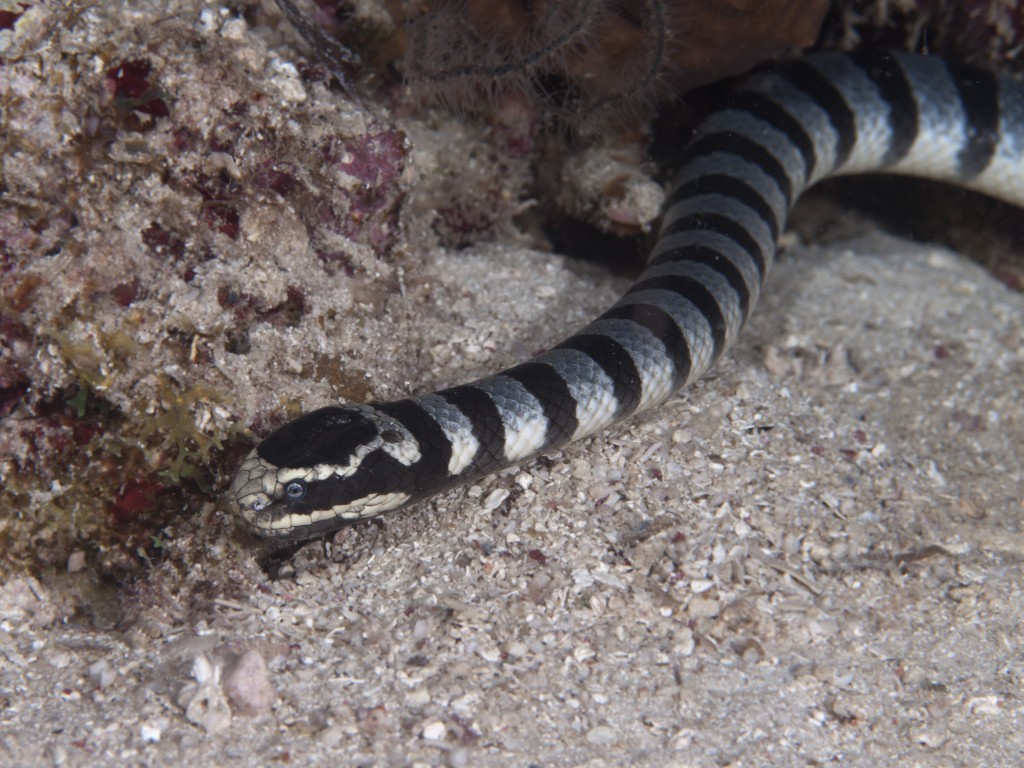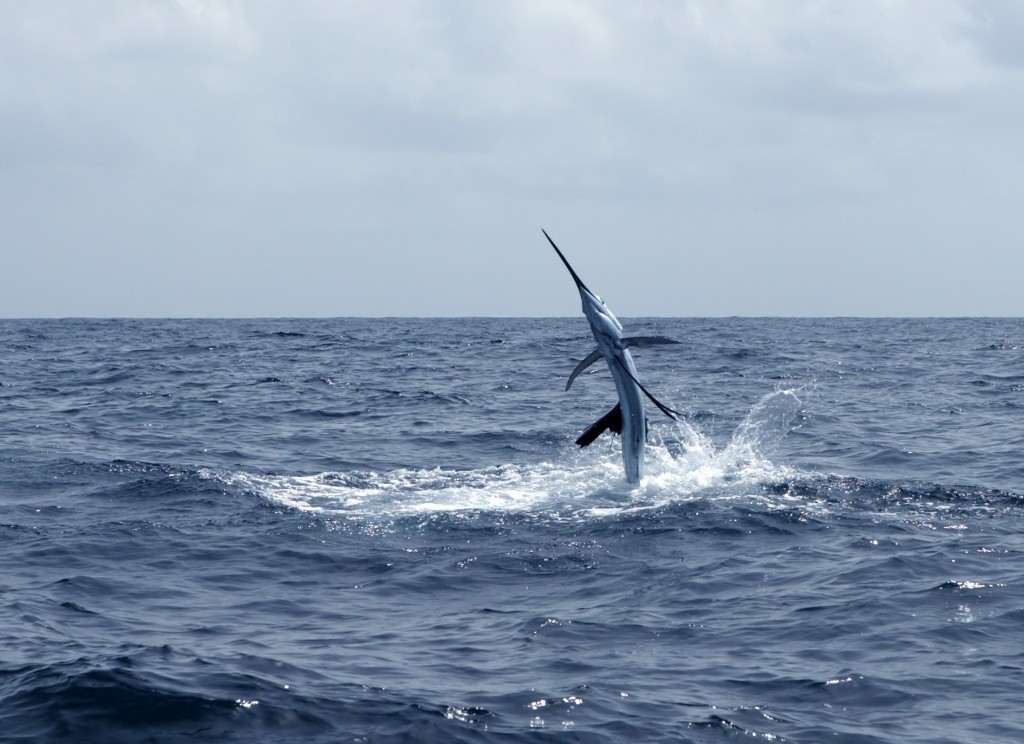For many marine animals, life in the ocean is harsh. It’s a constant struggle each day to both find food and avoid becoming food for something further up the food chain. But evolution has adapted some marine animals so perfectly to their environment that they’ve become the ultimate predators. Deadly marine predators come in many forms, from reef fish to sharks, from reptiles to mammals. We have judged them here in their capacity as apex predators rather than for their reputation for aggressiveness towards humans. Almost without exception, humanity poses the only real threat to each of these creatures, rather than the other way around.
Sea snake
The sea snake family includes species with the most potent venom of all the world’s snakes. Found in tropical, coastal waters throughout the Indian Ocean and the Pacific, sea snakes can grow to between four and 10 feet long. Although their ancestors once lived on land, sea snakes are now fully adapted to life in the ocean; most have paddle-like tails for swimming and nostrils with valves to prevent the inhalation of water. In addition, their lungs are much larger than those of land-dwelling snakes, which scientists think helps control their buoyancy.
Although sea snakes are among the most venomous creatures in the world, they rarely pose a threat to humans. They are typically non-aggressive and cannot easily bite a person because of their small mouth. They feed mostly on small fish and juvenile octopus. Sea snakes seem to be able to choose whether or not to release their venom, as there are accounts of humans being bitten but not injected. Bites are rarely felt at the time, but if the snake releases its venom, consequences can include paralysis, headaches, vomiting and stiffness, as well as acute renal failure, suffocation and cardiac arrest due to the breakdown of skeletal muscle tissue.
Leopard seal
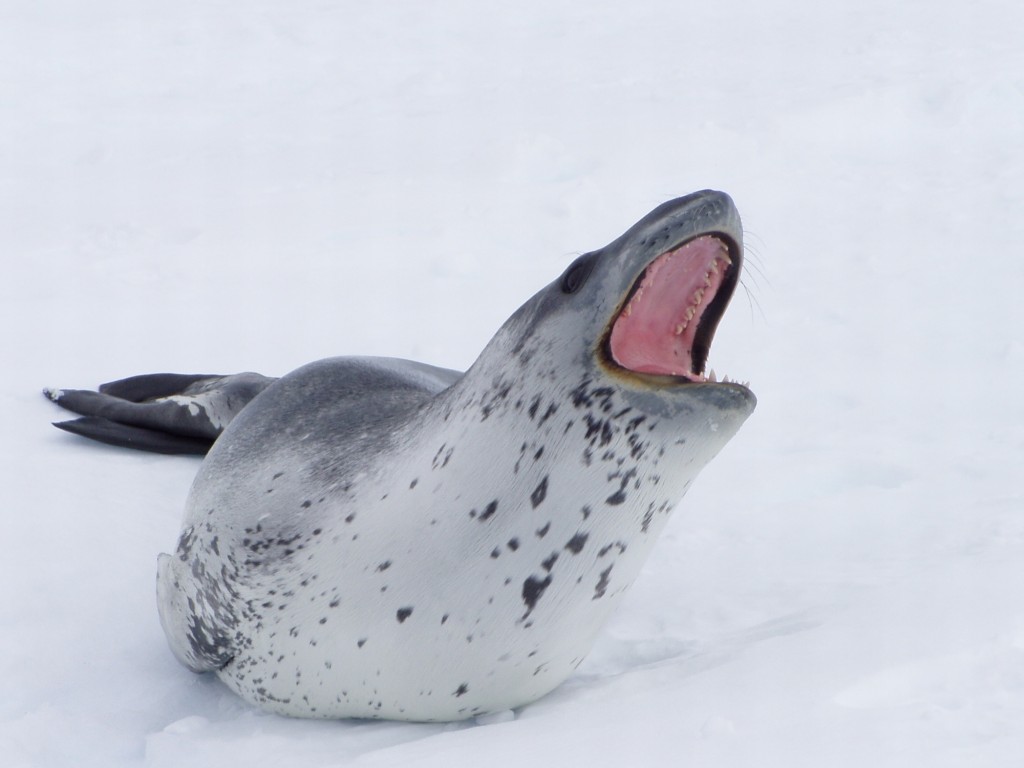
The leopard seal is one of Antarctica’s most deadly marine predators. Their range includes Antarctica itself, as well as most sub-Antarctic islands and southern areas of South Africa, Australia, New Zealand and Argentina. Leopard seals can reach up to 12 feet long and weigh 1,300 pounds. They are second only to orcas, their only real predator, on the Antarctic food chain. They have a diverse diet — while they prey mostly on penguins and other seals, their teeth are uniquely adapted to sieve krill from the water as well as tear flesh. A leopard seal’s canines are approximately 1 inch long, making them its most fearsome weapon.
These seals employ a particularly violent method of hunting penguins. They typically lie in wait at the edges of the ice shelf, from where they seize the birds as they enter the ocean. The seal beats the penguin against the surface of the water until it dies, whereupon the seal tears the bird into smaller pieces by shaking it in its teeth from side to side. Although isolated cases of leopard seals acting aggressively towards humans and even occasionally attacking them have been documented, they are also naturally inquisitive. Canadian photographer Paul Nicklen captured images of a leopard seal interacting playfully with him, even presenting him with dead penguins.
Atlantic Blue Marlin
Other than as a prized angling target, Atlantic blue marlin have few natural predators. This pelagic, migratory species lives mostly in blue water, and follows fluctuating warm-ocean currents. You’ll find them perennially in the tropical waters of the Atlantic and the Indo-Pacific, where they subsist primarily on tuna and mackerel. Occasionally, they dive to deeper depths in pursuit of squid. Their streamlined bodies and long dorsal fins combine to make them one of the fastest fish in the sea, reaching speeds of up to 50 mph. An adult blue marlin can weigh as much as 1,500 pounds and measure over 17 feet long.
Although their speed and size undoubtedly contribute to their reputation as top marine predators, what makes them unique is their impressive bill, which protrudes like a sword from their head. Blue marlin use this bill to injure their prey, by spearing individuals as they dart through schools of fish, and then returning to eat the wounded. In 2007, a study showed that 130 of the undigested prey found in the bellies of 227 blue marlin had injuries consistent with having been speared by the marlin’s bill. In addition, the blue marlin has the ability to change its skin color through the use of iridophores and light-reflecting skin cells. Some researchers think that they use these rapidly fluctuating color changes to confuse and corral shoals of fish into tight bait balls, making them easier to attack.
Lionfish
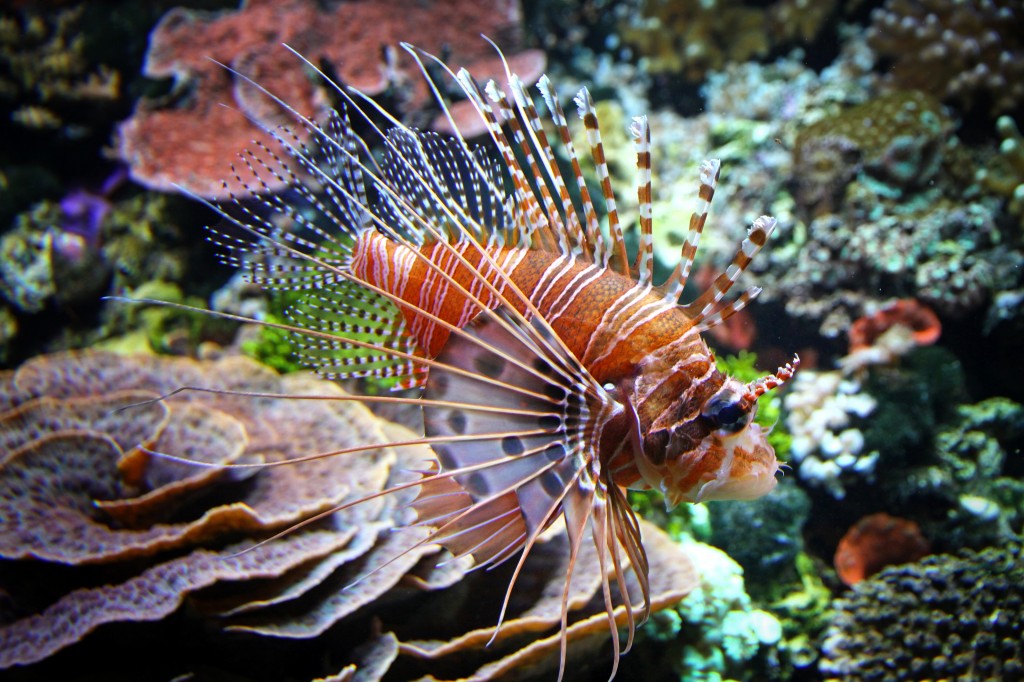
Although the lionfish may seem like a strange inclusion on this list, its small size and distinctive beauty mask its devastating proficiency as one of the deadly marine predators. The nine species of lionfish are native to the Indo-Pacific. Here they prey on small fish, invertebrates and mollusks, and possesses highly venomous spines. Their venom not only makes them unpalatable to any would-be predators, but also makes them effective hunters. Human reactions to lionfish venom include extreme pain, fever, nausea and vomiting, numbness and convulsion. In rare cases, particularly when an allergic reaction is triggered, lionfish venom can even cause paralysis, heart failure, anaphylaxis and death. They are both territorial and aggressive, and possess exceptional buoyancy control thanks to a specialized bilateral swim bladder.
Lionfish use their pectoral fins to fan prey into their mouths, which they swallow whole. Occasionally they use their venom when hunting, and scientists have recorded them blowing jets of water at prey to disorient them. Proof of the lionfish’s effectiveness as a predator is evident in the Caribbean, where they’re an invasive species. Thanks to no natural predators and favorable conditions, they multiplied by 700 percent between 2004 and 2008. Their hunting skills and aggressive natures have proved catastrophic for the Caribbean. Scientists predict that reef diversity in the Atlantic will fall up to 80 percent as a result of their presence. In five weeks, a single lionfish on a Caribbean reef can reduce juvenile reef fish populations by 79 percent.
Polar Bear
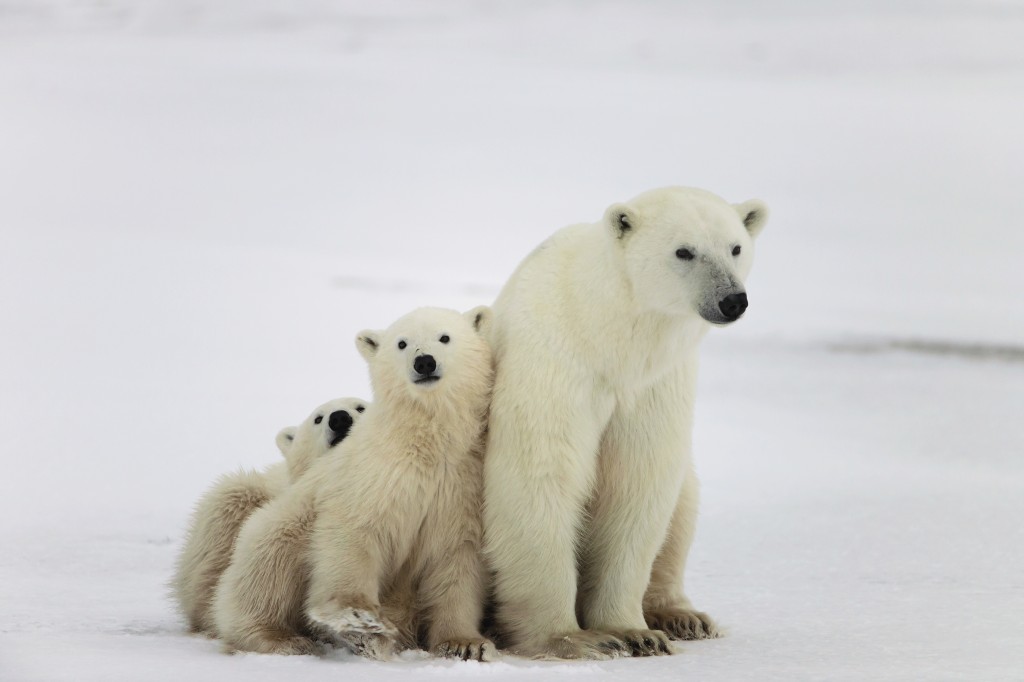
Although essentially a land animal, polar bears spend most of their life at sea. We find them within the Arctic Circle. They are the largest terrestrial mammalian predator, with males typically weighing up to 1,500 pounds. Polar bears are exquisitely adapted for life on the ice, with significantly larger feet than other bears, to facilitate walking through thick snow or over thin ice. These large feet also give them extra propulsion in the water, making them exceptionally good swimmers. Polar bears’ paws have a covering of dermal bumps. These create traction, while their claws are deeply grooved so they can dig through ice easier. These adaptations are the result of thousands of years of evolution; the oldest known polar bear fossil dates back approximately 110,000 years.
As well as evolving to cope with sub-zero temperatures, polar bears are well equipped for their role as the Arctic’s apex predator. They can smell seals, their primary food, from almost a mile away, even if the seal is buried beneath feet of snow. Although polar bears prefer to catch their prey from land as it surfaces for air, they are also adept swimmers. Polar bears have been seen as far as 200 miles from land, and can reach swimming speeds of 6 mph. However, while they do occasionally give chase to seals in the water, they predominantly employ a tactic known as still-hunting. The bears wait patiently by seal-breathing holes. When it surfaces, they drag the seal out onto the ice with their formidable claws. Polar bears have also tackled animals that weigh twice as much, including walrus, belugas and narwhals.
Bull Shark
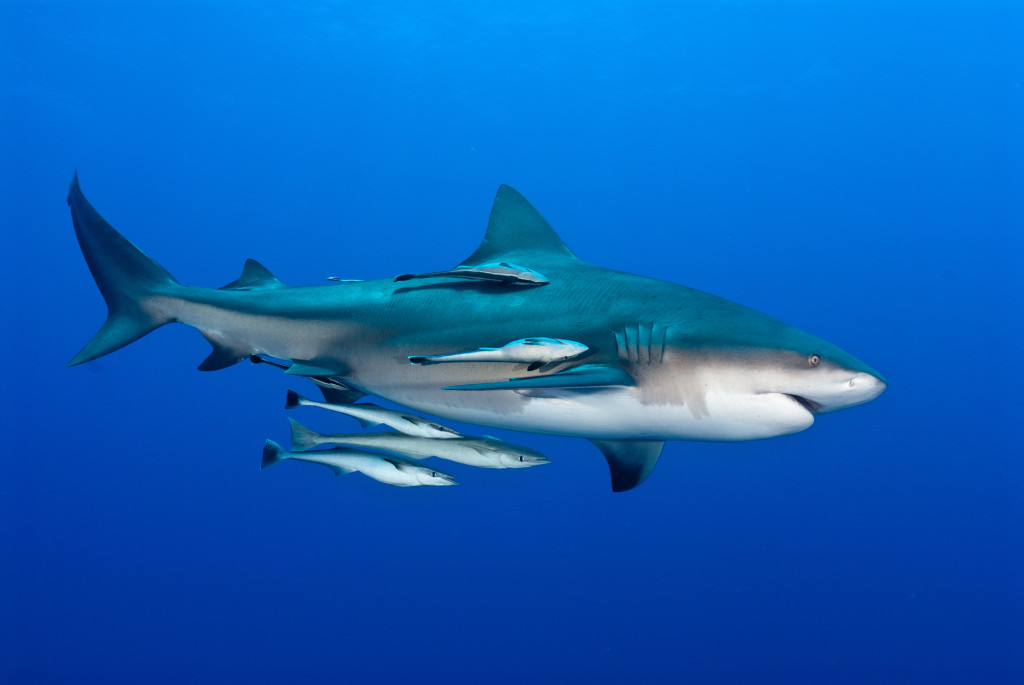
Although usually overshadowed by the great white in terms of reputation, the bull shark is the most versatile and well-adapted hunter of all the sharks. Found in tropical and temperate waters around the world, these deadly marine predators favor coastal waters and murky visibility. They are apex predators not only in salt water, but in fresh water as well. This makes them exceptional among the bigger sharks. Growing up to 11 feet long, bull sharks favor estuaries and river mouths. They have even been documented in inshore lakes and rivers. Extraordinary bull shark sightings include one seen 2,500 miles up the Amazon River in Peru and an established community of bull sharks in Lake Nicaragua. People have spotted them in both the Mississippi and Potomac Rivers in the United States as well.
Bull sharks are opportunistic hunters, and have been known to attack and kill a wide range of animals. In the ocean, these include bony fishes, other sharks, turtles, sea birds, crustaceans and marine mammals. Terrestrial mammals are also possible prey animals inland. With a bite force of up to 1,300 pounds, bull sharks hold the title for the strongest bite of all investigated cartilaginous fishes. Their eyes are small, because they typically hunt in dirty inshore waters where eyesight is of little use. Instead, they use electro-receptors in their noses to detect prey, as well as a lateral line that can pick up vibrations in the water. Bull sharks are typically solitary animals but have been known to hunt in pairs. Their wide distribution and ability to tolerate both freshwater and unusually high levels of salinity make them one of the most effective predators in the ocean.
Saltwater Crocodile
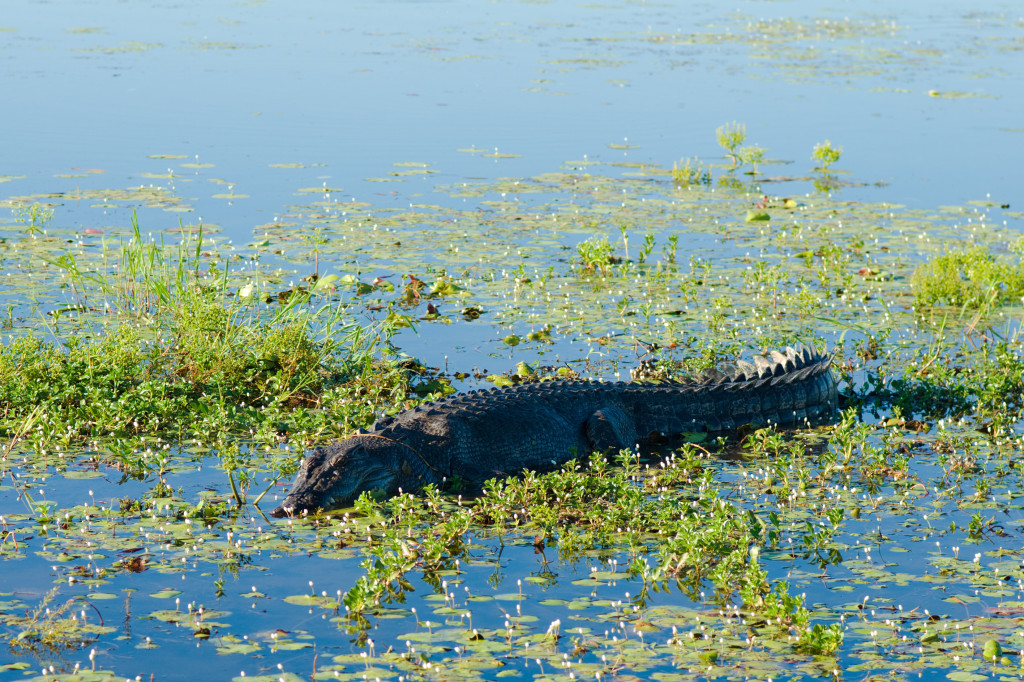
These formidable crocodiles are the largest reptiles in the world, reaching lengths of over 22 feet. They have earned their fearsome reputation as one of nature’s most deadly marine predators. You can find them throughout Southeast Asia, parts of India, Africa and Northern Australia. Although you can find them in rivers, lagoons, estuaries and mangrove swamps, saltwater crocodiles are perfectly capable of spending protracted periods of time in the open ocean.
They use ocean currents to travel large distances, and can spend weeks at sea. With the exception of humans, saltwater crocodiles have no natural predators. Instead, they are capable of preying upon most animals they come into contact with. Studies show that their indiscriminate marine diet includes bony fish, turtles, sea birds, rays, marine mammals and even sharks.
When on land, saltwater crocodiles enjoy an equally varied diet. They have killed and eaten all manner of land mammals, including buffalo, horses and in 2003, a tiger. They are typically ambush hunters, capable of impressive bursts of speed when attacking from the water. Designed to seize and grip prey, their teeth are not meant to tear flesh. They often swallow smaller prey whole and pull larger victims into deeper water to drown them.
Saltwater crocodiles often store their food underwater until the flesh becomes soft enough to tear off easily. They also display a behavior called death-rolling, wherein the crocodile spins its victim to bite off more manageable pieces. They can swim up to18 mph over short distances and have the strongest bite of any living animal.
Orca
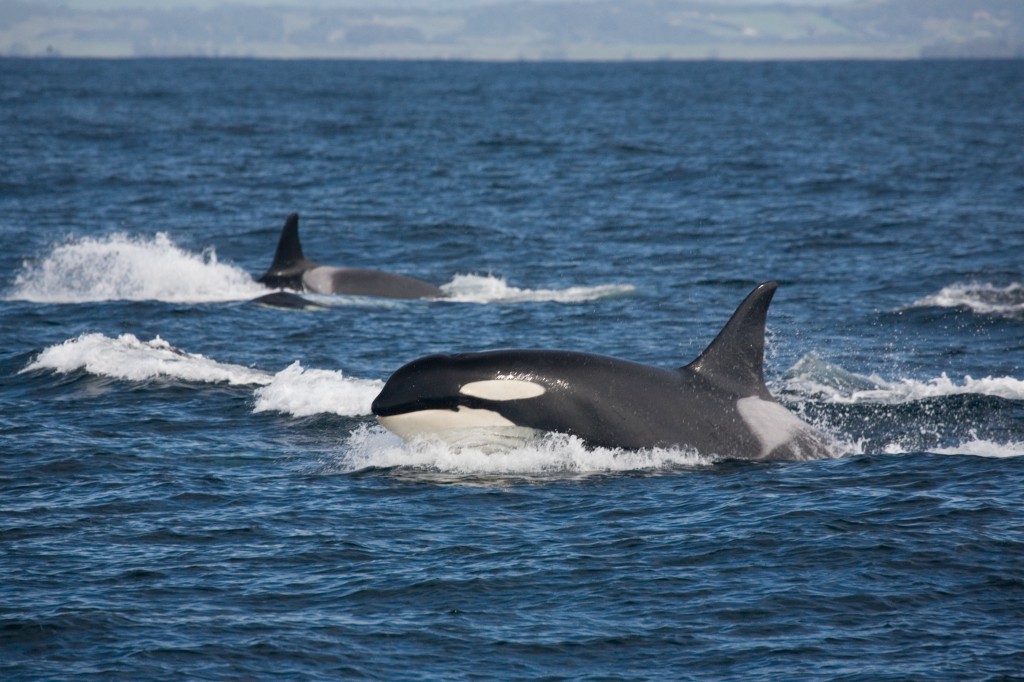
Only man is a threat to the orca, which is perhaps the most famous marine predator of all. Technically part of the oceanic dolphin family, the orca is a hugely successful species. There are specific sub-categories of orca, including oceanic, resident and transient. Each category pursues different prey, but each is equally well equipped to do so. Orcas can weigh 22,000 pounds and can measure up to 32 feet long. Despite their bulk, they are one of the fastest marine mammals, and can reach speeds of over 35 mph. As well as possessing good eyesight and hearing, they use echolocation to determine the location of their prey. Orcas hunt singly or in groups. They have adapted their hunting habits to the specifics of their environment all over the world.
In New Zealand, orcas prey specifically on sharks and rays. They have learned how to safely attack stingrays by pinning them to the seafloor and biting them to disable their sting. Orcas have been known to induce tonic immobility in sharks by flipping them onto their backs. An orca in California famously used this technique to immobilize, kill and eat a great white shark. Orcas can hunt and kill whales much larger than themselves. They particularly target migrating mothers and calves. They use group tactics to harass the whales until they are exhausted, finally separating the calf and drowning it by preventing it from surfacing. Other hunting techniques unique to orcas include intentionally beaching themselves to catch seals and sea lions in Argentina, and creating waves to wash seals from ice floes in Antarctica.


